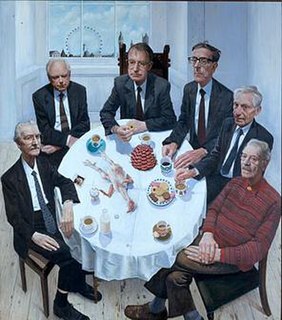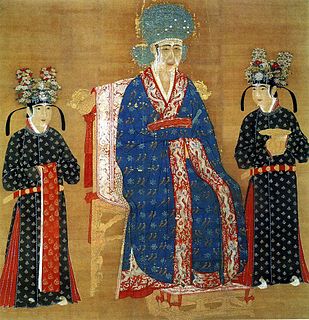
The Archibald Prize was the first major prize for portraiture in Australian art. It was first awarded in 1921 after the receipt of a bequest from J. F. Archibald, the editor of The Bulletin who died in 1919. It is now administered by the trustees of the Art Gallery of New South Wales and awarded for "the best portrait, preferentially of some man or woman distinguished in Art, Letters, Science or Politics, painted by an artist resident in Australia during the twelve months preceding the date fixed by the trustees for sending in the pictures." The Archibald Prize has been awarded annually since 1921 and since July 2015 the prize has been AU$100,000.

The National Portrait Gallery (NPG) is an art gallery in London housing a collection of portraits of historically important and famous British people. It was the first portrait gallery in the world when it opened in 1856. The gallery moved in 1896 to its current site at St Martin's Place, off Trafalgar Square, and adjoining the National Gallery. It has been expanded twice since then. The National Portrait Gallery also has regional outposts at Beningbrough Hall in Yorkshire and Montacute House in Somerset. It is unconnected to the Scottish National Portrait Gallery in Edinburgh, with which its remit overlaps. The gallery is a non-departmental public body sponsored by the Department for Culture, Media and Sport.

The Scottish National Portrait Gallery is an art museum on Queen Street, Edinburgh. The gallery holds the national collections of portraits, all of which are of, but not necessarily by, Scots. It also holds the Scottish National Photography Collection.
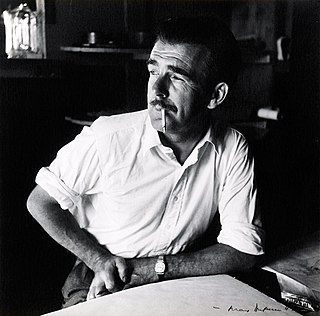
Sir William (Bill) Dobell was a renowned Australian portrait and landscape artist of the 20th century. Dobell won the Archibald Prize, Australia's premier award for portrait artists on three occasions. The Dobell Prize is named in his honour.
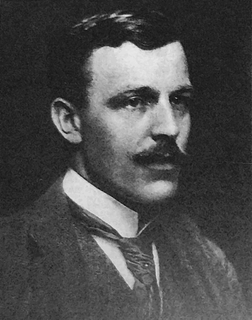
Sir James Guthrie was a Scottish painter, best known in his own lifetime for his portraiture, although today more generally regarded as a painter of Scottish Realism.
Frederick James Lloyd, more commonly known as James Lloyd, was an English artist. He became famous for his paintings, mostly of animals and country landscapes.

Sir Ivor Henry Thomas Hele, CBE was an Australian artist noted for portraiture. He was Australia's longest serving war artist and completed more commissioned works than any other in the history of Australian art.

Judy Cassab, born Judit Kaszab, was an Australian painter.
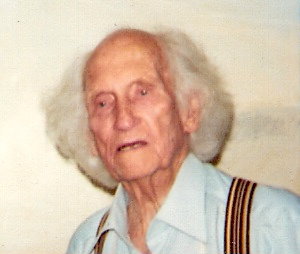
Lloyd Frederic Rees AC CMG was an Australian landscape painter who twice won the Wynne Prize for his landscape paintings.
A Question of Attribution is a 1988 one-act stage play, written by Alan Bennett. It was premièred at the National Theatre, London, in December 1988, along with the stage version of An Englishman Abroad. The two plays are collectively called Single Spies.
Julian Opie is a visual artist of the New British Sculpture movement.

Christopher David Williams was a Welsh artist.
Sir Ernest Guy Richard Lloyd, 1st Baronet, DSO was an English-descent Scottish Unionist Party politician. The son of a Shropshire family, a paternal uncle, George Butler Lloyd had been Member of Parliament for Shrewsbury.
R. Ian Lloyd is an Australian photographer who was born in Canada in 1953 and studied photography at Rochester Institute of Technology and Brooks Institute of Photography in the United States before coming to Australia in 1975. He worked in television and as a photographer for guide books before establishing his own photography and publishing company in Singapore in 1983. Ian has undertaken commissions for magazines such as National Geographic, Fortune and Time, and has won numerous awards for his work. He has photographed 36 books on countries and regions around Asia including large format books on Kathmandu, Bali and Singapore and a four volume series on Australian wine regions. His photographs have been widely exhibited around the world. In 2000 a retrospective book and exhibition of his work, Spirit of Asia, toured six Asian cities under the sponsorship of the National Geographic Channel. In 2007 he produced a book, DVD and travelling exhibition entitled STUDIO: Australian Painters on the Nature of Creativity.

Sir William Milbourne James was a Welsh judge.
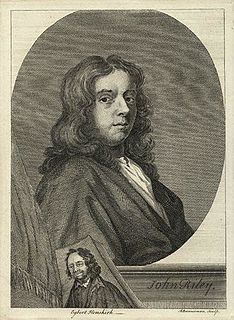
John Riley, or Ryley, was an English portrait painter. He painted portraits of Charles II and James II, and was court painter to William III and Mary II. One of his pupils was Jonathan Richardson.
Vladimir Meškėnas is an Australian expressionist painter and portraitist in oil and pastel, who has been a frequent Archibald Prize finalist.
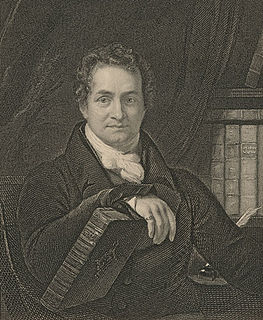
James Thomson (1788–1850) was an English engraver, known for his portraits. He completed his apprenticeship in engraving and then established himself independently, following the dot and stipple style. His engravings and paintings featured both leading figures of his day and those of previous periods.
James Lechay was an American painter who described himself an "abstract impressionist".
This page is based on this
Wikipedia article Text is available under the
CC BY-SA 4.0 license; additional terms may apply.
Images, videos and audio are available under their respective licenses.
